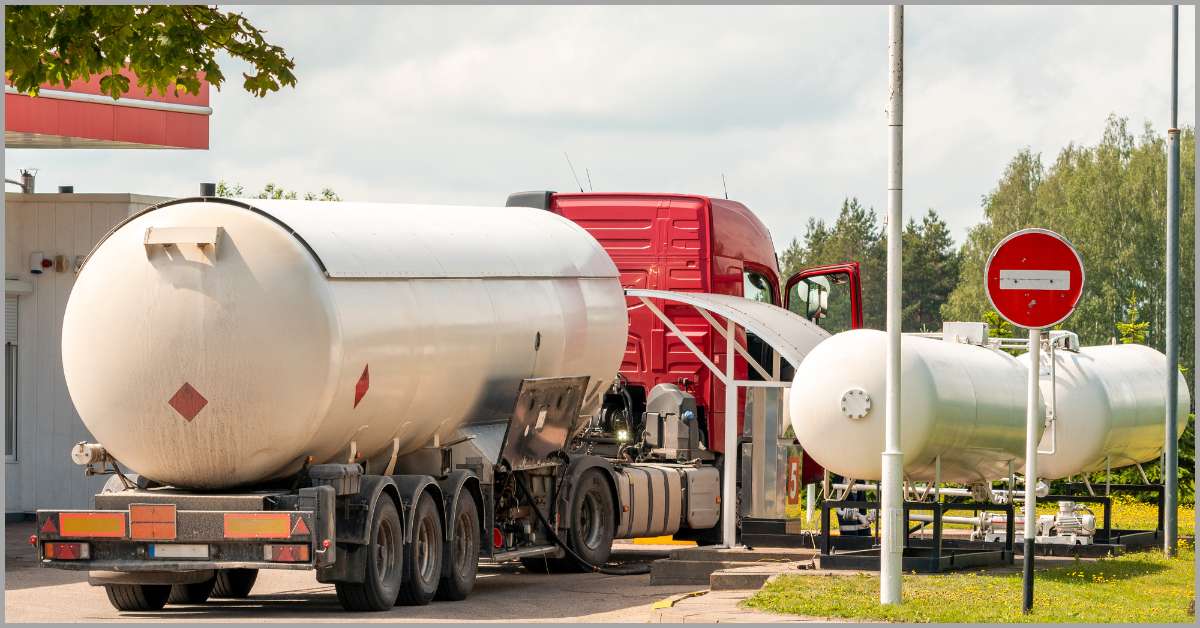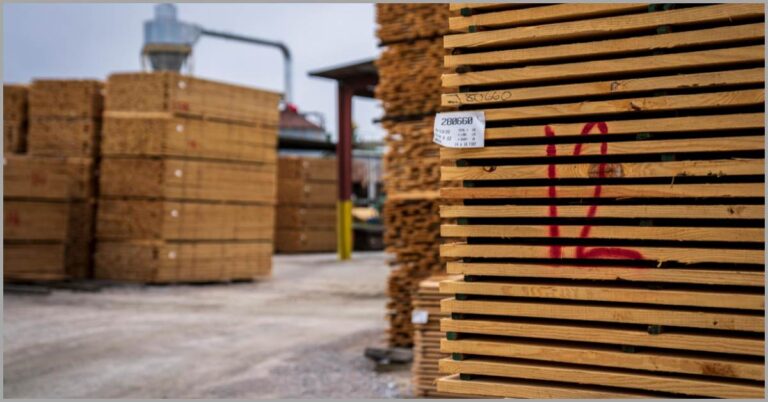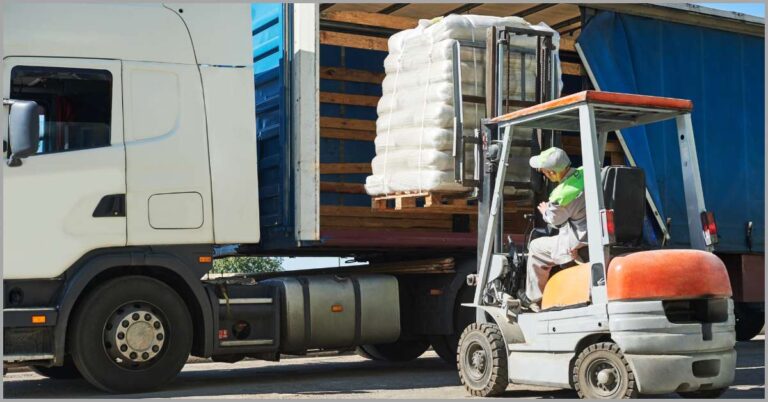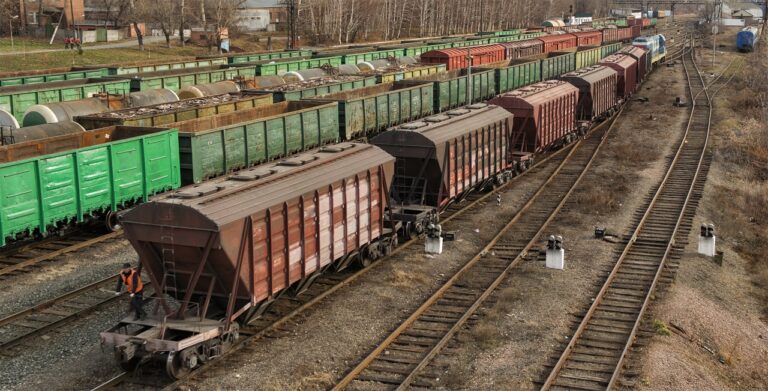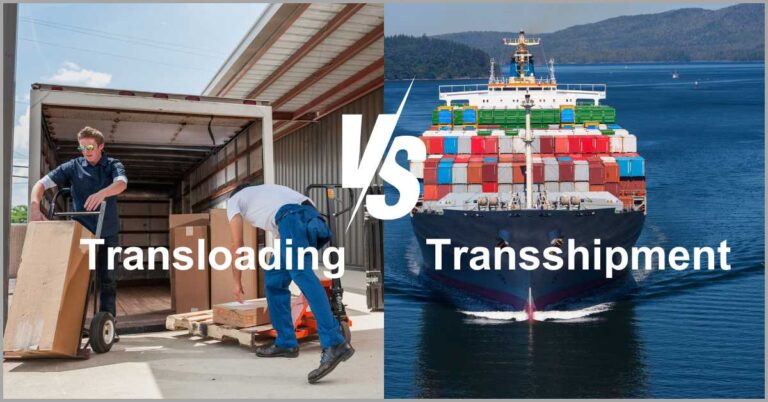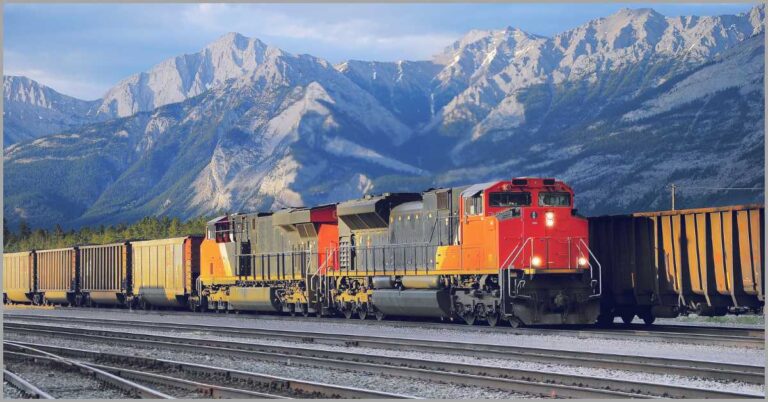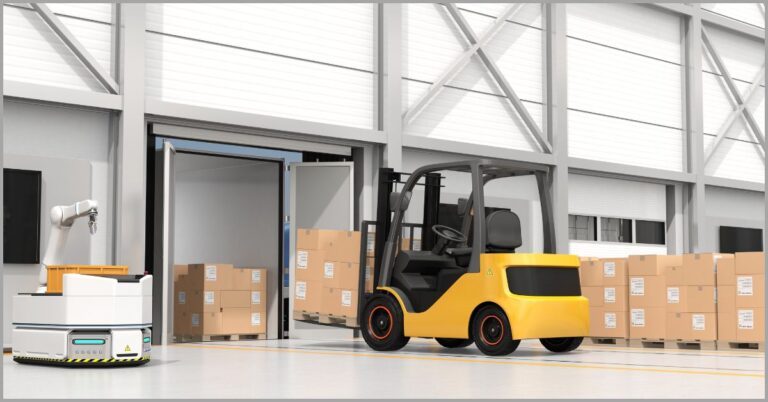What is Butane Transloading: Ultimate Guide to Safe Natural Gas Transport in 2024
Thinking about getting into butane transloading?
This ranks among profitable warehouse business ideas to consider.
However, working with butane requires unique knowhow, equipment and expertise compared to transloading other conventional commodities.
A GVR study discovered a 4% compound annual growth rate for the butane market, which was valued at $108.43 billion in 2022. So butane transloading can certainly be a very lucrative venture.
In order to help you get started, I’ve rounded up important strategies for transloading this commodity. We’ll go over the best practices for shipping butane to enable you to start transloading and transporting this product very efficiently.
You’ll also learn about the right equipment to use to improve safety and compliance when you’re transloading and shipping butane for your clients.
If you’d like to sharpen your prowess in other transloading niches, check out this article I wrote on rail transload shipping for efficient overland transportation.
In this article, we’ll discuss what butane transloading is as we unpack the ultimate guide to safe natural gas transport in 2024 to help you start a successful business.
Let’s get started.
What is butane transloading?
So what is butane transloading?
It refers to the transfer of butane fuel from one form of transportation to another. For example, transloading commonly occurs when you transfer butane from a tanker truck and onto a rail tanker or when you switch butane from pipelines to truck and rail tankers.
With transloading, you can consolidate large quantities of butane to avoid shipping the commodity in smaller shipments, which can be more costly.
Through this shipping strategy, you can move this type of natural gas via rail, which tends to be more fuel efficient in addition to offering higher carrier capacity than trucks.
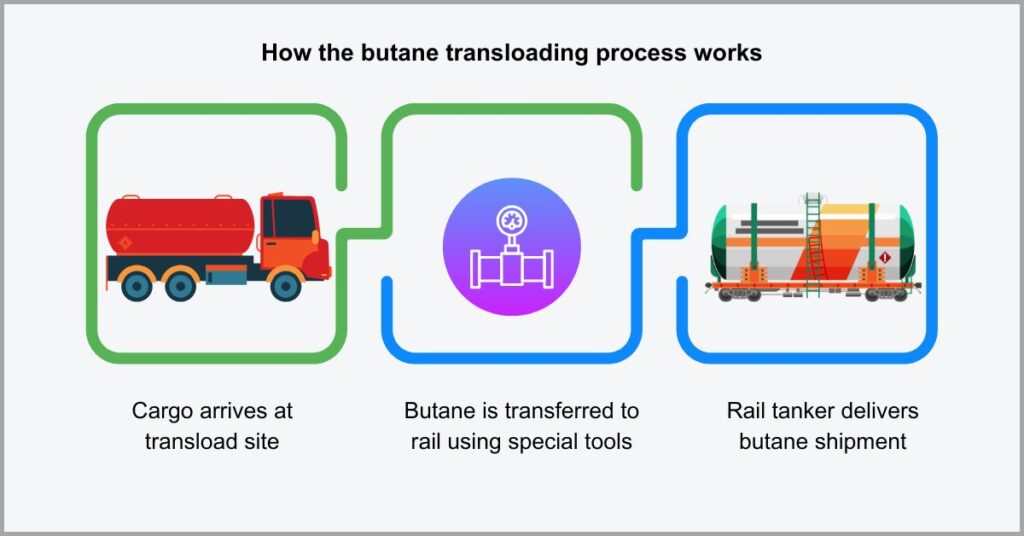
With rail often enjoying a lower cost-per-ton-per-mile, and one rail car able to move up to four truckloads, it proves a cost-efficient and safe way of transporting butane compared to other means such as trucking.
However, transloading butane can be a complex process that requires precise & well coordinated logistics, so I recommend using a transload management software.
Click here to start your free transloads.co trial of our proven transloading platform.
With our software, you can keep track of inbound and outboard butane to prepare loading and unloading operations accordingly. It also lets you digitize inventory tracking and manage workers digitally to help safer butane transload processes.
How butane transloading facilities work
There are various types of transloading facilities.
Each of them is purpose-built to handle specific types of cargo transfers, with butane transloading facilities leveraging special equipment to handle natural gas and deliver your shipment to various target markets or facilities.
With butane transload facilities, you can deliver shipments of natural gas to residential or industrial refineries more safely and efficiently.
A study by FBI revealed that 53% of butane is shipped for residential and commercial purposes. The rest is split between industrial and other use cases which shows the need for butane deconsolidation to enable it to reach these different markets.
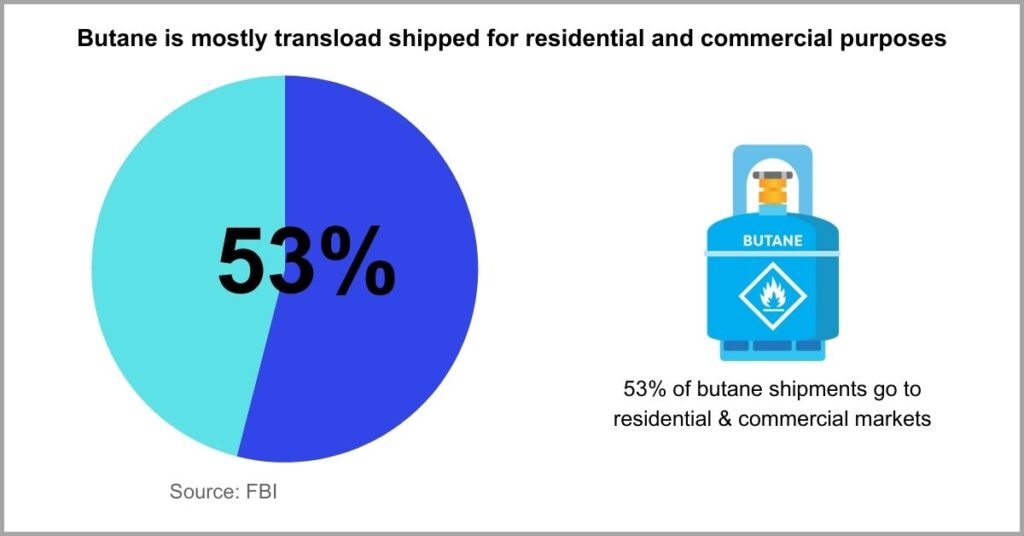
This is where butane transloaders come in.
These are specialized facilities that have unique infrastructure for handling your butane shipping needs.
For example, to avoid key transloading challenges like long shipping distances, these facilities are often strategically located near or along pipelines. This enables you to minimize mileage and also to tap into safe and wide networks to move butane.
It therefore may sometimes be possible for such facilities to even transfer the commodity from trucks or rail and into pipelines for more efficient shipping.
That said, some facilities may offer butane transloading services as a part of a wide range of other transloading services so such companies aren’t always niche-focused.
Equipment used during butane transloading
So what equipment does a butane transloader use?
Some important things you should know about butane is that you’ll need specialized equipment like butane transloading pumps. These enable the efficient and safe transfer of pressurized liquid gas from truck to rail tankers and vice versa.
Butane has very unique properties compared to other types of natural gas, and this necessitates strategic cargo transfer and the need for specialized tools.
One of those special tools includes butane pump transfer skids.
This equipment is different from the pump used to transfer gasoline or crude oil. It’s specially designed to handle the unique properties and characteristics of butane, such as having a higher boiling point and being denser than products like propare.
Additionally, they may also leverage butane compressors, to help to condense and pressurize the fuel to enable efficient and safe transportation.
Your butane transload may also use transload yard management tools to keep track of assets like tankers and workers.
It’s also possible that they’ll have pressurized tanks that they’ll transfer the butane to. For facilities that aren’t purpose built to handle butane transloading, you may find mobile butane transloaders that can move between different sites for efficient butane transfers.
The benefits of butane transloading
1. Faster butane shipping
Butane shipping may involve very strict deadlines.
You may need to move this commodity quickly in order to meet market demand, maintain customer satisfaction or minimize your inventory holding expenses given the bulky nature of this cargo.
However, with traditional LPG shipping strategies like trucks, you’re susceptible to delays from traffic jams, road construction and extreme weather events.
Congestion alone cost the US over $70.4 billion in 2023, according to a study by INRIX. It marks a massive 15% increase from 2022, with these losses stemming from increased driver wages, higher fuel consumption and other factors.
This is where innovative shipping tactics like transloading save the day.
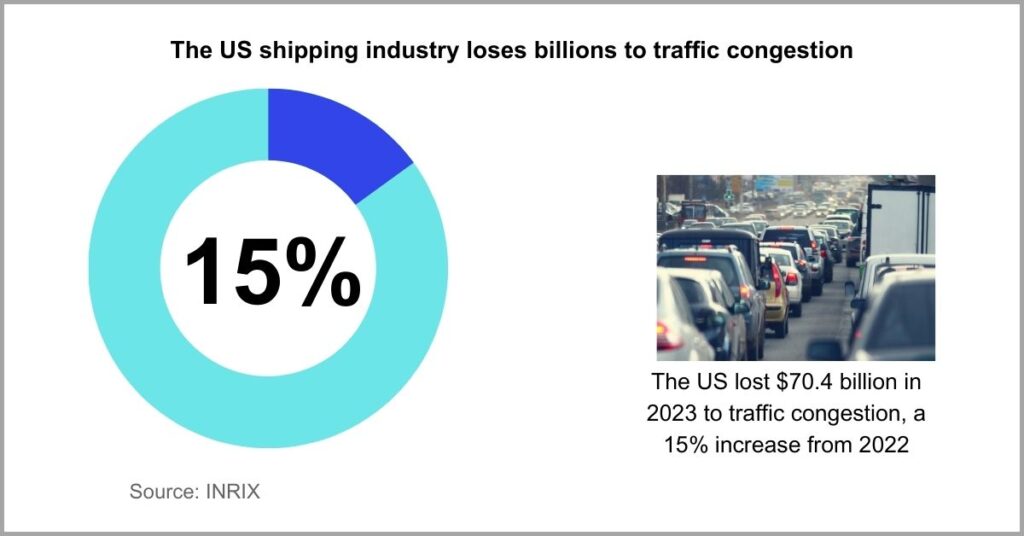
So how does transloading solve the congestion headache?
Through railroad switching, butane transloaders can also optimize rail routes to reduce shipping distances and take advantage of high speed shipping lines.
Additionally, it enables you to get around the challenges of shipping butane by truck by leveraging more effective railroad logistics strategies. With rail being more immune to congestion & other delay events, you can move your product with fewer interruptions.
Moreover, the butane transfer process also occurs at a very high speed due to the use of transload pumps with high flow rate capability.
So it also ensures that you can switch butane loads across different forms of transportation quickly compared to traditional and less-efficient siphoning solutions.
2. Safer butane transportation
What are the hazards of butane cargo?
For one, butane is a highly flammable commodity to move and transload, which means that it poses a high risk of explosion during transportation. Such incidents, if they happen, compromise human safety and also put the environment at risk.
So shipping butane requires utmost care and the enforcement of strict safety measures, otherwise you can lose your entire cargo to a hazardous event.
Unfortunately, a study by WTW revealed that 50% of supply chain leaders noticed an increase in supply chain risk-related losses between 2021 and 2023. Some of those losses arose from resolving truck tanker accidents.
While it may not completely eliminate the risks, transloading can improve safety.
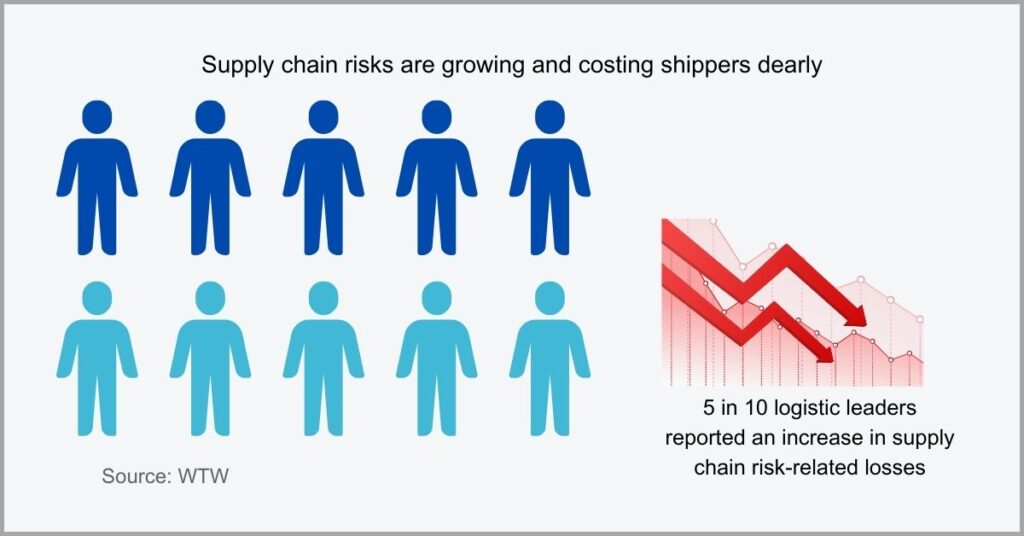
Transloading enables the safer shipping of butane in many ways.
For instance, instead of using transloading and intermodal shipping strategies such as trucking, it enables you to move through rail as an alternative.
With rail accounting for fewer accidents compared to other forms of overland transportation like trucks, this means that there’s a lower likelihood that your shipment will be involved in such an incident.
More importantly, some transloaders may also offer pipeline butane transloading.
This enables you to switch your shipment from trucks or rail tankers to dedicated pipelines, which also provide a safer way of transporting butane over long distances.
3. Cost-effective transportation
Shipping butane can also be very costly.
This is partly because freight consolidation may not be possible since you need to dedicate an entire truckload to your shipment, which decreases cost-efficiency when you’re working with less than truckload butane cargo.
What’s more, moving butane also attracts extra costs due to the need for heavy-duty gas trucks, LPG-certified drivers and other special resources.
A survey by Statista revealed that 50% of global shippers are struggling to cut costs. In fact, they rate it as the biggest challenge to their business because of how it directly affects their cash flow, and their ability to expand and take on more business.
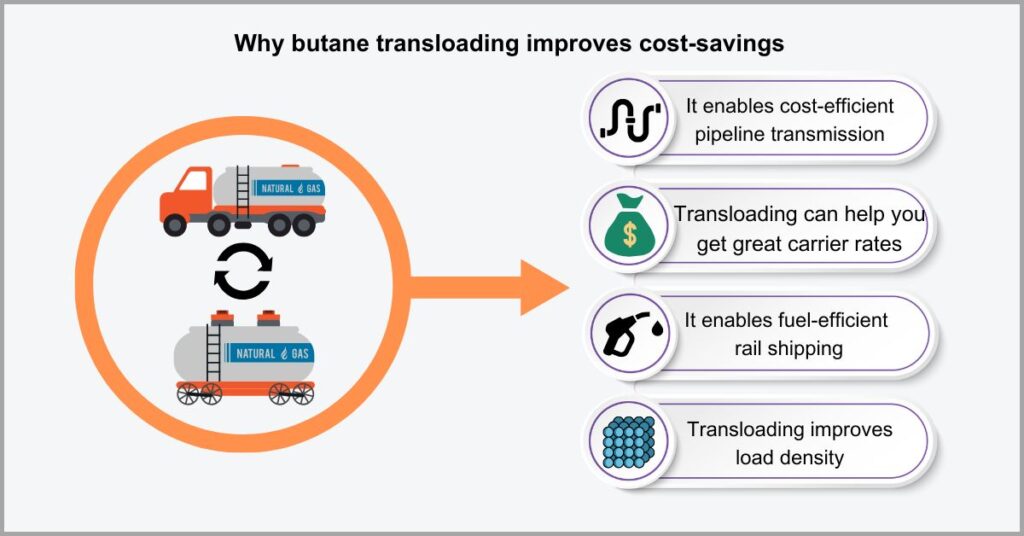
How does butane transloading improve cost-efficiency?
Well, it allows you to move from road to rail transportation which is not only more fuel-efficient but also offers a higher load density in comparison. So you can move the same volume of butane shipments for a fraction of the price.
Butane transloading also uses top tech innovations in logistics to pressurize and liquify gas to enable transmission via pipeline, which may not have initially been possible.
This shipping strategy may also open up opportunities for moving butane via pipeline, which is even more cost-efficient than truck and rail. Furthermore, the repressurising of butane can also result in fewer transmission losses to cut out costly wastages.
4. Improved regulatory compliance
Butane falls under the dangerous goods category.
In particular, the United States Department of Transportation (USDT) rates it as a Class 2 flammable gas, and the onus is on you as the shipper to ensure that you properly transport and handle this product accordingly.
If you violate the USDT regulations such as by mislabeling your butane shipment or failing to secure it properly, this can attract huge legal consequences .
A study by the NCB revealed that 43% of dangerous cargoes failed compliance checks due to being improperly secured while 6.5% failed due to misdeclaration. This is why transloading is necessary to help you address these and other compliance issues.
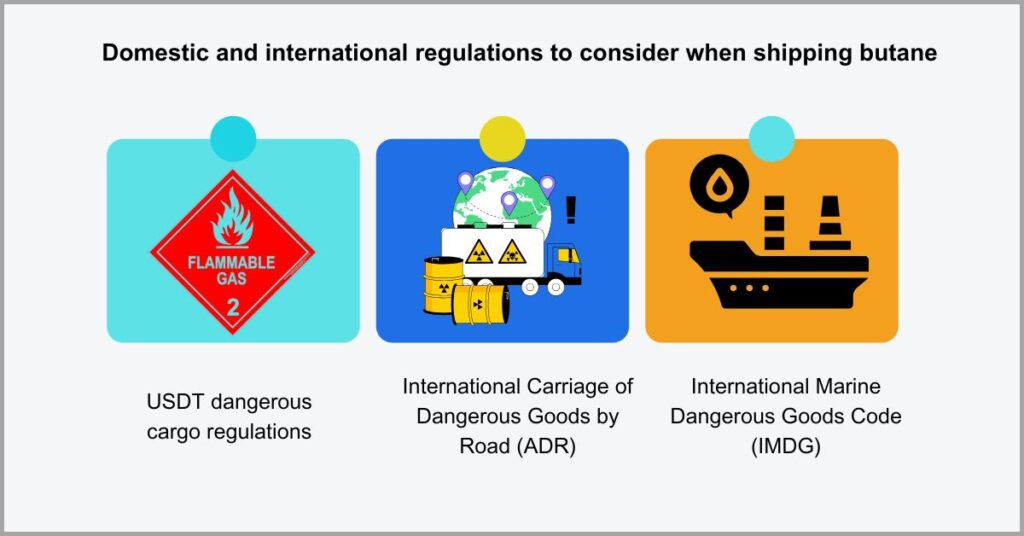
How does transloading improve regulatory compliance?
Your butane transloader can help you ensure that you label and declare your cargo correctly in line with regulatory requirements for dangerous cargo declaration.
Additionally, through the use of proven transload management software, transloaders can help you improve supply chain traceability for butane shipments to further reduce non-compliance risks.
They can also repackage your freight into the right containers and other approved packing and ensure that each consignment is accompanied with the right documentation as required by regulatory authorities.
Overall, your butane transloading partner offers immense experience that you can rely on to improve compliance with local & international regulations like the IMDG and ADR.
5. Butane blending and mixing
So what is butane blending and mixing?
It refers to the process of customizing the pressure of butane to create valuable products such as gasoline, for example, in a bid to ease transportation and increase the value and potential revenue of your consignment.
Without butane transloading and blending services, you can easily fail to capture the maximum yield of butane products, thus resulting in lower profitability.
In 2022, the gasoline market demand was 139.29 billion gallons in the United States, according to a Statista survey. With butane transloading and blending services, you can turn some of your low-cost butane into very high value gasoline.
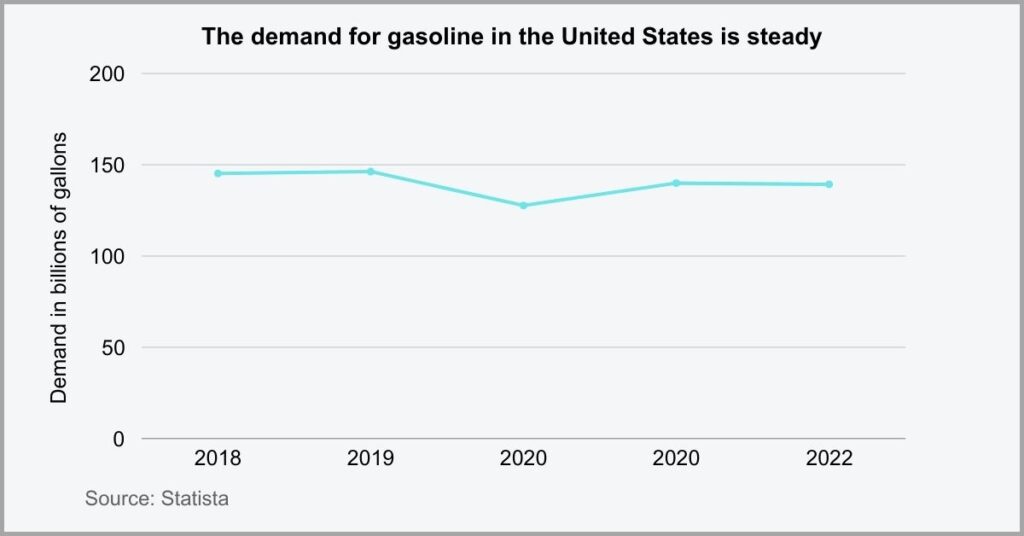
It’s crucial to note that not all butane transloaders offer blending and mixing services.
This is usually available as a value-added service so you’ll find that it’s available among select facilities. That said, it’s an important offering to consider that helps you get more value out of your product and even expand your market base.
Speaking of expansion, we also offer transload consultancy that can help you break into new markets and get customers if you run a butane transloading facility.
Click here to get our premium support services that cover transload yard setup.
Beyond helping you get your butane transload facility up and running, we also provide guidance on acquiring customers, sourcing talents and optimizing your operations.
How to choose a butane transloading facility
a) Assess performance & technologies
What’s the transload company’s track record?
The first thing I suggest is doing your homework on the facility’s safety record so that you can be sure you’ll handle dangerous cargo to a company that can handle it safely.
What’s more, examining a butane transloading company’s performance can also help you avoid unreliable shippers who may not meet your timelines.
Technology is also another important yardstick to consider.
You also want a facility that leverages modern butane compressors, portable transloaders and even state of the art B2B inventory management tools which can help you improve shipping efficiency and minimize leaks and losses.
No matter the technology, however, it’s important that your transloader offers the equipment and infrastructure that accommodates any unique butane shipping requirements you may have to minimize additional expenses for your business.
b) Consider value added services
You can sell and transload butane as an end product.
However, this will mean that you’ll need to transfer bulk amounts of the product into bottles and containers so that you can ship complete products to your market.
It’s therefore crucial to consider value added services like packaging or blending, which can help increase the amount of ROI you’ll get from butane transloading.
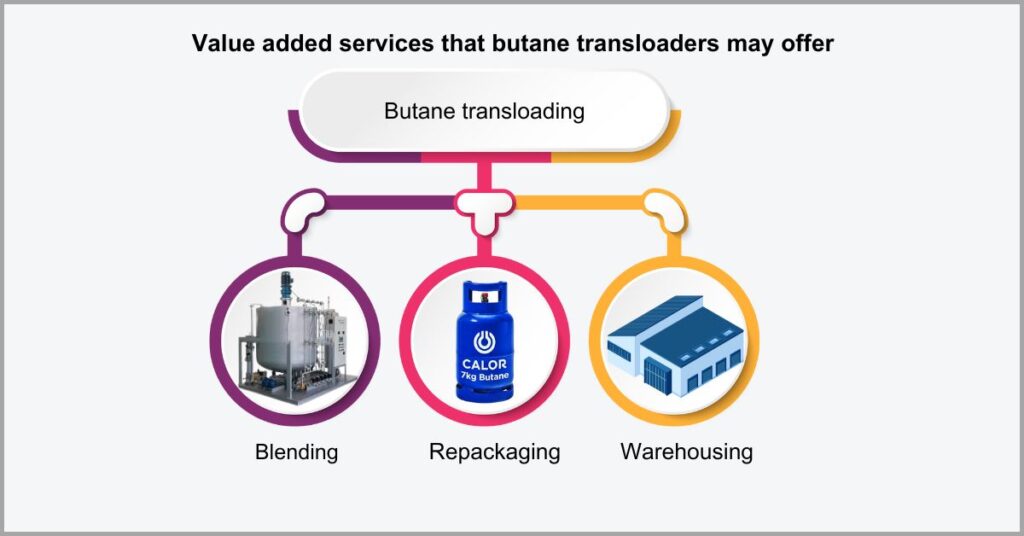
Additionally, you may also need warehousing to temporarily store packaged butane.
You could start a warehouse business to store butane containers or, better yet, use a transloader who also offers warehousing to help you hit two birds with one stone.
Overall, you need to figure out what value-added services your transloader offers and determine if these will be a deal breaker in line with your business’s goals.
c) Examine regulatory compliance
Is the butane transload facility regulatory compliant?
This is an important criterion that you need to consider when choosing a butane transloading facility if you don’t want to brush shoulders with authorities and to reduce the risk of having your consignment being held up at inspection points.
So going with a transload facility that’s inexperienced in butane transloading can lead to huge supply chain risks resulting from non-compliance.
Therefore, it’s vital to ensure your transloading or cross docking shipping provider is familiar with important best practices and rules for shipping butane.
This includes appropriate declaration of butane as well as the regulatory compliant marking of trucks or rail tankers used to transport the product. If you’ll be requiring packaging services, the transloader should also know to use approved packaging.
Conclusion
Shipping butane requires specialized vehicles.
For example, you may need to hire expensive LNG trucks to move your product.
With the cost of heavy-duty and specialized LNG vehicles through the roof, shipping butane by road can attract extremely high logistics expenses.
A PLS survey established that 23.2% of liquefied natural gas carriers ranked cost among the biggest barriers to adopting LNG vehicles. With these trucks requiring investments of up to $50,000, it’s understable where they’re coming from.
Butane transloading, however, minimizes the usage of LNG trucks through alternative transportation, thus resulting in more economic shipping. Another thing that can help you achieve huge cost-savings is using transload management software.
Click here to start your free transloads.co trial which can help you manage the butane transloading process more efficiently.
Our software allows you to track shipments in real-time, digitize key butane shipping documents and eliminate process inefficiencies to increase savings and compliance.

